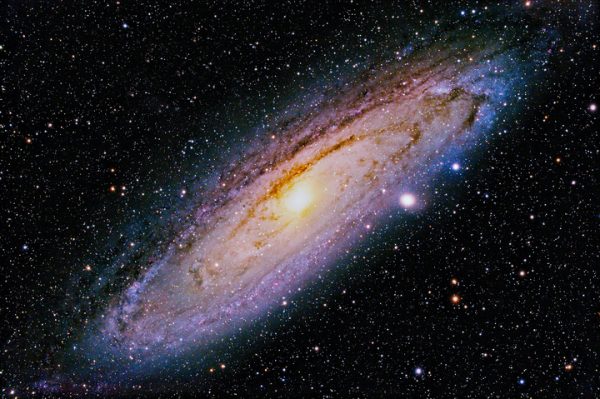Radio Signal Coming from Inside the Milky Way Detected by Astronomers – Newsweek
A radio signal coming from a source within the Milky Way has been detected by astronomers.
The signal is a fast radio burst (FRB), bright radio bursts that last milliseconds and appear to come from deep space. Because they are short-lived, they were often only identified in satellite data after the signal was recorded. Finding where they came from and what produced them has been largely a mystery.
The first FRBs were discovered over a decade ago. Since then, scientists have been trying to work out what is causing them. Suggestions have included cataclysmic events, such as the collision of two neutron stars or a collapsing black hole. But these hypotheses were questioned when a repeating FRB was uncovered. A black hole can only collapse once, because when the FRB repeated scientists realized either there must be another explanation, or more than one source can produce these bursts.
Over recent years, an international group of scientists has come together to solve the mystery of FRBs. The collaboration has led to the discovery of more FRBs, with researchers using the findings to home in on more of their locations across the universe. For example, earlier this year, one team was able to trace on FRB to a “odd” V-shaped star-forming region in a huge spiral galaxy half a billion light years away.
Until now, however, none appeared to have come from our own galaxy.
The latest discovery was announced in by Paul Scholz, of the University of Toronto, Canada, on behalf of the CHIME (Canadian Hydrogen Intensity Mapping Experiment) and FRB Collaboration.
In it, the team announced the detection of a bright radio burst coming from the active magneter known as SGR 1935+2154. This is a type of neutron star, the collapsed core of a massive star, that is thought to have an extremely powerful magnetic field.
The observation was made Tuesday. The discovery is preliminary and researchers will need to analyze the burst to confirm their findings. However, if correct, they say this would be the first FRB ever detected coming from our own galaxy. “Additional observations are strongly encouraged at all wavelengths,” they wrote.
The findings have been welcomed by other researchers studying FRBs. Jason W. T. Hessels, Senior Scientist at ASTRON, Netherlands Institute for Radio Astronomy, told Newsweek the discovery was a “breakthrough for the field.”

“We now have direct evidence that a known Galactic magnetar has produced a radio burst that is getting close to as bright as some known extragalactic FRB sources,” he said in an email. “It’s basically guaranteed that some FRB sources must be, by analogy, bursting magnetars, but a key question remains: are they all bursting magnetars, or do FRBs come from a variety of different origins?”
Hessels said it was also interesting that an X-ray burst was detected at the same, as it helps show how much energy was released by the burst. “Whereas the radio burst was easily detectable, only a tiny amount of the released energy was carried by that radio burst; most of the energy was released in other forms, including high-energy X-rays,” he said. “The radio burst is like the steam whistle on a steam engine. It tells you that there’s a steam engine, but it’s energetically insignificant. Here we get both the radio burst and an X-ray burst to better understand what actually happened to the neutron star and its magnetosphere.”
Andrew Siemion, Director of the Berkeley SETI Research Center and Principal Investigator of Breakthrough Listen, a project to search for extraterrestrial communication, who was also not involved in the burst’s detection, told Newsweek the results were “very exciting.” He said one of the important questions about FRBs is what is producing them. He said if the results hold, it would be “strong evidence” that some FRBs arise from magnetars.
“However, the detailed link between magnetars and FRB occurrence would still pose some outstanding questions,” he said in an email. “Why do only certain magnetars produce FRBs? What gives rise to the repetition we see in certain FRB sources? Is there possibly a second, or third source of single-pulse FRBs independent of the magnetar model? Answering these questions will require more observations, but knowing that sources like SGR 1935+2134 can produce tremendously bright radio pulses provides a very helpful hint as to where we ought to be looking.”






